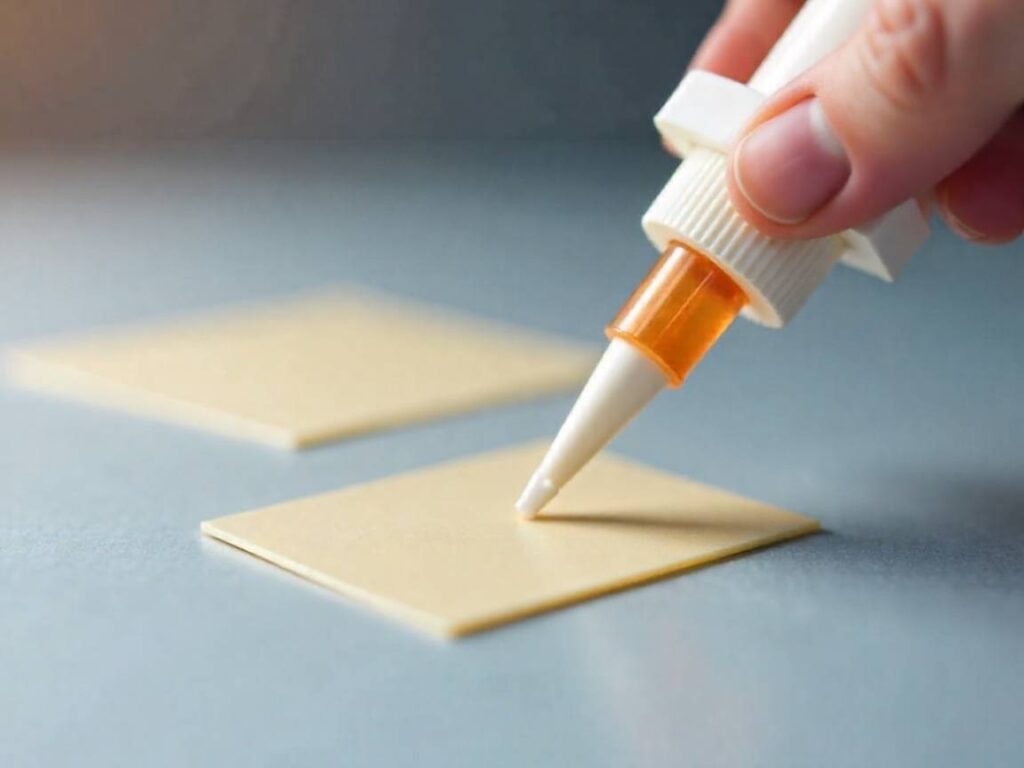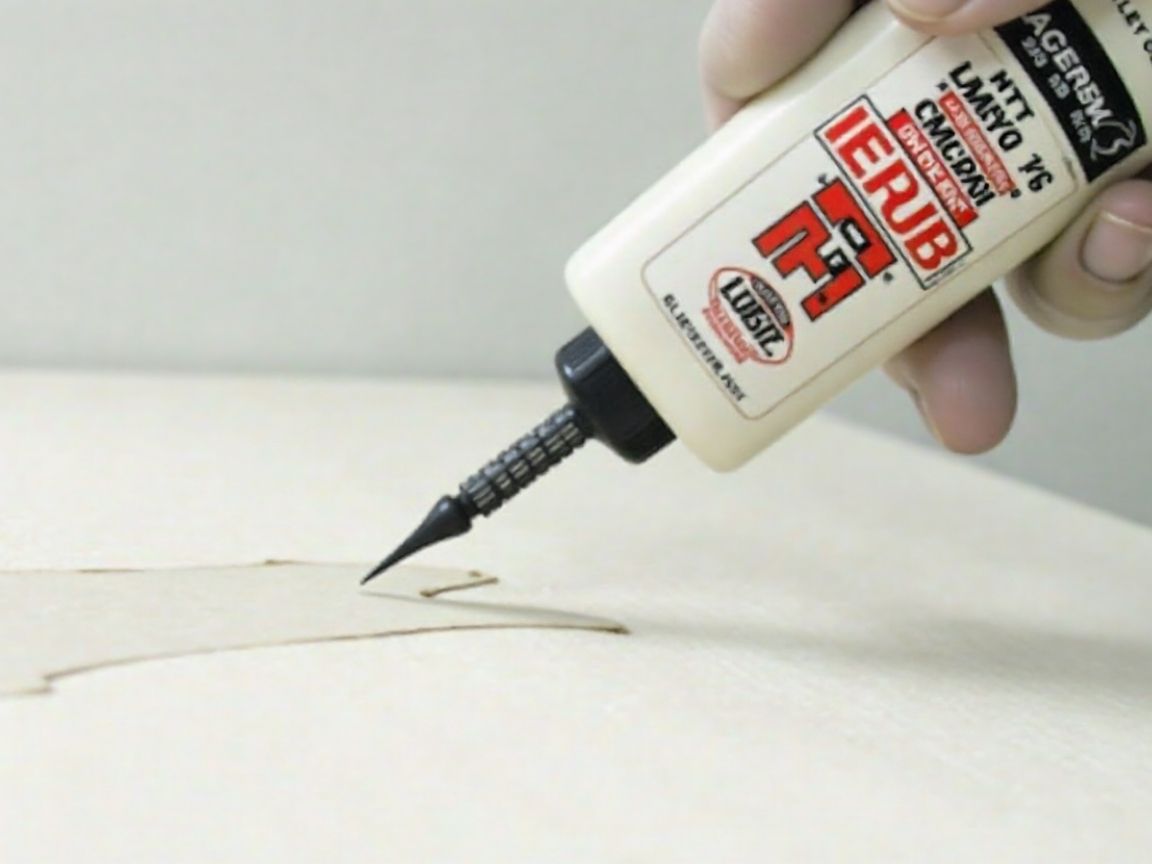Hot melt adhesives are widely used in industries ranging from manufacturing to crafts because they are easy to use, work quickly, and create strong bonds. Made from thermoplastic materials, these adhesives are solid at room temperature but melt when heated. As they cool, they harden again, forming a strong connection between surfaces. In this guide, you’ll learn about how long hot melt adhesives take to cure, what affects the curing process, and tips for using hot melt glue effectively.
What is Hot Melt Glue and How Does it Work?
Hot melt glue, or hot melt adhesive, is a type of thermoplastic that is used while melted. The most common kinds are made from polymers like ethylene-vinyl acetate (EVA), elastomers, and polyurethanes, which help make the bond both flexible and strong.
When you plug in a hot glue gun, it melts the glue stick so the liquid glue can flow out of the nozzle. This makes it easy to apply glue to different surfaces quickly. As the glue cools and hardens, it forms a strong bond that can hold materials together almost right away. Hot melt glue works on many materials, including wood, plastic, fabric, and paper, so it’s useful in packaging, construction, and crafts. It also resists moisture and can handle different temperatures.
Understanding Hot Melt Adhesive Composition

Hot melt adhesives are mainly made from thermoplastic polymers that stay solid at room temperature. When heated, they melt and turn into a liquid, which makes them easy to use. The main ingredients in hot melt adhesives are:
- Ethylene-Vinyl Acetate (EVA): This polymer provides a balance between elasticity and bonding strength.
- Tackifiers: These enhance the adhesive’s stickiness, helping the glue bond better to surfaces.
- Waxes: Waxes help regulate the viscosity of the adhesive, making it easier to apply.
- Plasticizers: These increase the strength and flexibility of the bond.
- Fillers: These are added to modify the adhesive’s characteristics, such as its hardness, thermal stability, or resistance to environmental conditions.
When these ingredients are mixed together, they create a hot melt adhesive that works well for many bonding jobs. Because it sets quickly and forms a strong bond, it’s great for lots of uses.
How Hot Melt Glue Sticks Function
Hot melt glue sticks are made of solid polymers that melt into a liquid when heated. The glue gun melts the stick so you can use it right away. Once you apply the glue, it cools and hardens quickly, creating a strong bond. Because the glue sets fast, you can finish your work sooner and usually don’t need to use clamps or hold the pieces together for long.
Hot melt glue is very versatile and works on materials like paper, plastic, fabric, and wood. Because it sets quickly and bonds well, many industries use it. It’s also non-toxic and doesn’t give off fumes, so you don’t need solvents, making it a safer and cleaner choice.
The Role of Glue Guns in Applying Hot Glue

Hot glue guns are key tools for using hot melt adhesives. They heat the glue stick until it melts, making it easy to apply. The nozzle is designed for different tasks, giving you control over how much glue you use. Many modern glue guns have adjustable temperature settings and triggers so that you can control the flow and temperature for the best results.
Hot glue guns often have safety features like insulated handles and grips that don’t slip, making them safer and more comfortable to use. Whether you’re crafting or working in an industrial setting, a hot glue gun is a valuable tool for applying hot melt adhesives efficiently.
Factors Affecting the Curing Time of Hot Melt Glue
How long hot melt glue takes to cure depends on things like temperature, the material you’re gluing, and how thick the glue layer is.
Temperature and Its Impact on Drying Time
The temperature of both the glue and the environment plays a significant role in the curing time of hot melt glue. Warmer temperatures can help the glue cool and solidify faster by preventing it from cooling too quickly and becoming too rigid. In contrast, cooler temperatures can cause the glue to set too soon, potentially leading to incomplete adhesion. The temperature of the adhesive when it is extruded from the gun also affects curing time; hotter glue typically sets faster, creating a stronger bond.
Understanding how temperature influences the curing process is key to achieving optimal results with hot melt adhesives.
The Influence of Substrate Material on Curing

The material you are gluing also changes how fast the adhesive cures. Materials differ in how porous they are, how well they conduct heat, and how rough their surfaces are. These factors affect how well the glue sticks and how quickly it sets. For example:
- Porous materials like fabric and wood tend to absorb the glue more quickly, which can extend the curing time. These materials often require more adhesive to form a solid bond.
- Non-porous materials like metals and plastics may require surface treatment before the glue will bond effectively, and they may also slow down the curing process because they don’t absorb the adhesive as easily.
Materials that conduct heat well can cool the glue faster, which might make curing take longer. On the other hand, rougher surfaces can help the glue bond better by giving it more area to stick to.
The Effect of Glue Thickness on Cure Time
Thicker layers of hot melt glue take longer to cure than thin ones. This happens because thick glue traps heat and takes more time to dry all the way through. Sometimes, the inside stays soft even if the outside feels hard. Thin layers usually cure in a few hours to a day, but thick layers, especially over 2 mm, can take days or even weeks to set fully.
How Long Does Hot Melt Glue Typically Take to Cure?
How long hot melt adhesives take to cure depends on a few things, but traditional hot melt glues usually bond quickly.
- Average Curing Time: For traditional hot melt adhesives, the curing time is usually between 30 seconds and a minute. This is the time it takes for the glue to reach its handling strength, allowing for quick assembly. However, full bond strength can take up to 60 minutes, depending on factors like glue thickness, substrate material, and environmental conditions.
Comparison of Cure Times: PUR vs. Traditional Hot Melts

Polyurethane Reactive (PUR) hot melt adhesives cure differently from regular hot melt glues. Traditional hot melts harden quickly as they cool, but PUR adhesives cure in two stages. They stick at first, then keep curing as they react with moisture in the air, which makes the bond even stronger over time.
- Traditional hot melt adhesives set quickly as they cool and harden. They’re great for jobs that need fast bonding, but they might not hold up as well in tough conditions.
- PUR Hot Melts: These adhesives cure more slowly, taking days to weeks for complete curing, but they provide superior strength and durability once fully set.
Tips for Faster Curing of Hot Melt Glue
If you need to speed up the curing process of hot melt glue, here are a few tips:
- Use Heat Guns: A heat gun can accelerate the curing process by applying warm air to the glue, helping it solidify faster. However, be cautious not to overheat the materials or the glue, as excessive heat could damage the bond.
- Keep your workspace at the right temperature and humidity to help the glue cure faster. In industrial settings, using a curing oven or a controlled environment can also speed up the process.
- Increase airflow: Letting more air move around the glued area can help the glue cure faster.
Applications and Limitations of Hot Melt Adhesives
Hot melt adhesives are used in many industries, such as woodworking, packaging, automotive, and crafts. They work well for bonding wood, fabric, paper, and plastic. However, they might not be the best option for some plastics or places with big temperature changes. Where stronger bonds are required, such as in high-stress or high-temperature environments, alternative adhesives like structural adhesives or two-part epoxies may be more appropriate.
Frequently Asked Questions (FAQs)
Q: How long does it take for hot-melt glue to dry and solidify?
A: Hot melt glue typically takes 30 seconds to 1 minute to solidify and harden. However, the curing time can vary based on temperature, humidity, and the thickness of the glue used.
Q: What are the differences between regular hot melt adhesives and PUR hot melt adhesives?
A: Traditional hot melt adhesives bond quickly through cooling, while PUR adhesives cure through a chemical reaction with moisture. PUR adhesives provide a stronger bond but take longer to heal fully.
Q: Can hot-melt glue work on wood?
A: Yes, hot melt glue can be used on wood, but it may not provide the same strength as wood glue. For stronger, more durable bonds, traditional wood glue is a better option.
Q: What factors influence the curing time of hot melt glue?
A: The curing time is influenced by temperature, the material being bonded, glue thickness, and environmental conditions. High temperatures and increased humidity can speed up curing, while cooler conditions can slow it down.
Conclusion
Hot melt adhesives are versatile and efficient, used in many industries from construction to crafts. Knowing what affects curing time—like temperature, material, glue thickness, and environment—helps you get the best results. Traditional hot melt adhesives cure quickly, while PUR adhesives take longer but give you a stronger bond, which is good for jobs that need extra durability.
By choosing the right hot melt adhesive and following the tips in this guide, you can make quick, strong, and reliable bonds on many materials. Whether you’re doing a DIY project or working in a factory, hot melt adhesives offer a fast and effective solution. Remember the main factors that affect curing time, and try out methods like using a heat gun or improving your workspace for quicker results. With the right tools and know-how, you can get long-lasting, high-quality bonds every time.
When you know these tips and factors, you can use hot melt adhesives more effectively and get the best results for your projects.











